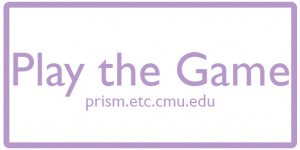 The Game (~30 minutes)
The Game (~30 minutes)
The game follows the story of a fox that meets a number of animals on its quest to save the forest from an impending flood. The game puts the player in various situations that can be mapped to the lives of children with autism, or of their neurotypical peers.
Share the following link with your students: prism.etc.cmu.edu
Playing through the game in advance will help the facilitators to guide the children in the event that they need guidance.
If you do not wish to play through the whole game, click here to watch a complete playthrough of the game on our YouTube channel.
 The Classroom Discussion (~30 minutes)
The Classroom Discussion (~30 minutes)
The teacher then leads the children through a discussion about moments in the game, based on a discussion framework that was co-created with our subject matter expert.
The text below is referenced from researchautism.org. Visit the website for more details and resources.
If you are unfamiliar with the autism spectrum disorder but would still like to conduct this workshop with your students, the internet is a great resource to educate yourself. A few paragraphs below can serve as an introduction, with more links at the bottom if you would like more resources.
What is autism?
Autism is a neurological disorder that is typically diagnosed by the age of three. The symptoms of autism involve three major areas of development, and impact a child’s abilities to:
- Engage in reciprocal social interactions with others
- Communicate with others in developmentally appropriate ways; and
- Participate in a range of activities and behaviors typical of the child’s age and stage of
development
One of the hallmarks of autism is that the characteristics vary significantly. No two children with autism are the same. Impairments can range from relatively mild to more severe. Autism spectrum disorders are found in all cultures and across all socio-economic groups, with the ratio of boys to girls with ASD being 4 to 1.
Why conduct this activity?
When children include one another in school activities everyone benefits. These relationships help to build respect and increased acceptance of diversity. Teachers must set the example by making every effort to promote acceptance of a student with autism as a full member and integral part of the class, even if that student only attends class for a few hours each week.
As a teacher, you must create a social environment that encourages positive interactions between the student with autism and his or her typically developing peers. Children with autism, by definition, have difficulties with social skill development and understanding language and social cues. With appropriate assistance, however, children with autism can engage with peers and establish mutually enjoyable and
lasting interpersonal relationships.
Research shows that when typically developing children are provided with clear, accurate and straightforward information, they
- Have more positive attitudes
- Increased understanding
- Greater acceptance of their peers with autism
Assuming there are no restrictions on disclosing that your student has autism, educating your class about autism and how it can affect their classmate can be an effective way to increase positive, social interactions between the child with autism and their classroom
peers.




